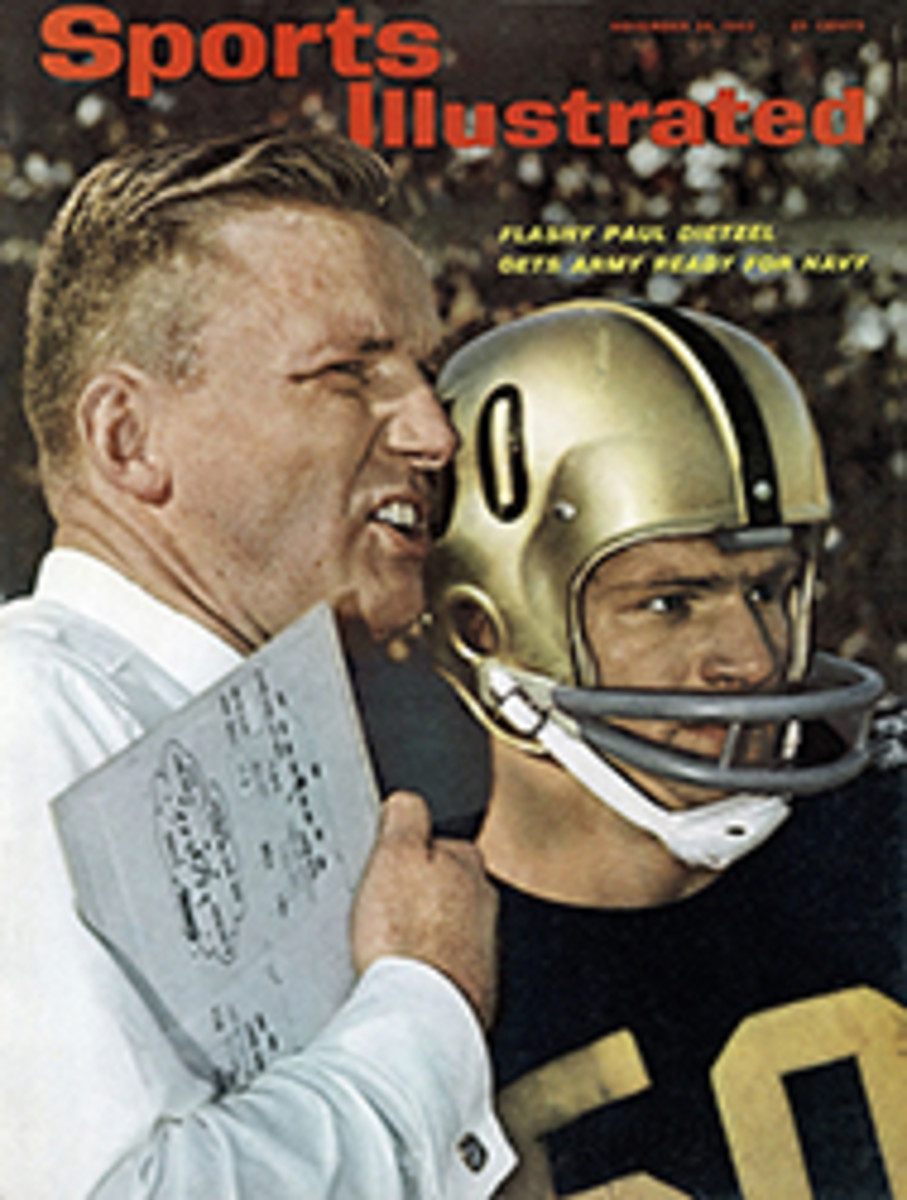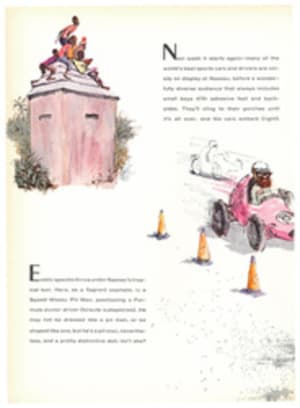
Game to please a hungry President
Even though there is no mention in the record of turkey being served at the first Thanksgiving feast, game there was in abundance—roast goose, roast duck, venison. For 200 years game was the staple meat on the American table. The young George Washington had no trouble at all bringing from the hunt a rich bag such as that surrounding him in the drawing above, made from an early print. Jefferson and Jackson both made use of the fare available in the country's woods and meadows. In fact, wild game was as much a part of a presidential table on festive occasions as the Beltsville turkey is in most American homes this week. Just how varied was this abundance is indicated by the menu of one of Andrew Jackson's dinners at The White House, described in a letter written by a visiting Pennsylvania to his daughter in 1834:
"The table was very splendidly laid out and illuminated.... The first course was soup in the French style; then beef bouille, next wild turkey boned and dressed with brains; after that fish, then chicken cold and dressed white, interlaided with slices of tongue and garnished with dressed salad, then canvass back ducks and celery, afterwards partridges with sweetbreads and last pheasants and old Virginia ham." And then there were the desserts. Mercifully, American menus—even presidential ones—have been considerably modified since those days. Four courses rather than 14 are Mrs. Kennedy's rule. And turkey, duck, partridge and pheasant no longer appear at the same meal, but are treated with the honor due their excellence and rarity.
Game birds, whether brought home from the field or the market, should be treated simply, as they were in the days when there were more than enough to go around. Thomas Jefferson was well aware of this culinary fact. He was not content merely to bring the birds home, but gave specific instructions for their preparation. His recipe for wild duck is given below.
From Thomas Jefferson's Cook Book by Marie Kimball (Garrett & Massie, Inc.)
THOMAS JEFFERSON'S WILD DUCK
Put into each of your ducks a small onion,½ teaspoonful of salt,¼ teaspoonful of pepper and 1 tablespoonful of red wine. Put in a very hot oven [for modern cooks: preheated to 425°] and roast 20 minutes. Meantime make a gravy of the necks and gizzards, 1 tablespoonful of red wine, half an anchovy (or 2 anchovy fillets), a blade of mace, 1 onion, salt and a dash of cayenne pepper. Cook in 2 cups of water and simmer until reduced to 1 cup. Strain through a fine sieve and pour over the ducks.
At The White House today Mrs. Kennedy's chef, René Verdon, treats game with the same respect that Jefferson demanded for it at Monticello. Verdon's pheasant ambassade is typical of the classical approach to game bird cookery.
PHEASANT AMBASSADE
One 2½-pound pheasant
3 strips larding pork
6 tablespoons butter
4 truffles, cut into 12 slices
1 cup brown sauce
¾ cup Madeira
¼ cup brandy
Truss legs and wings of pheasant close to body. Rub skin with a little salt. Cover breast of bird with strips of larding pork. Place in roasting pan along with 4 tablespoons butter. Roast in a preheated 425 oven for 45 minutes. Several minutes before removing pheasant from oven, heat 2 tablespoons butter in a heavy casserole (one which has a tight-fitting lid). Add truffle slices and sauté several minutes.
Remove bird from oven. Discard larding pork and trussing cord. Transfer to casserole. Skim all fat from roasting pan. Into remaining pan juices stir brown sauce and Madeira. Heat to boiling point, stirring constantly until smooth. Now stir in brandy. Pour over pheasant and cover casserole tightly. To make an even tighter seal, cover lid and about a third of the casserole with heavy foil, pressing foil down hard. Return to oven and continue roasting at the same high temperature for 15 minutes longer.
For Thanksgiving, the season when turkey is most often the bird on the table, here is another presidential recipe. It is a sauce taken from a collection of White House recipes of the 19th century. Once used for wild turkey, it is just as suitable for the supermarket bird.
CHESTNUT SAUCE
1 pound chestnuts
1 teaspoon coriander seeds
½ teaspoon salt
1 small bay leaf
1 to 1½ cups chicken or turkey stock
4 tablespoons butter
1 medium onion, finely chopped
Cut a cross on the flat side of chestnuts. Cover with boiling water and cook 10 minutes. Drain. Remove shells and fuzzy inner coating of nuts. Combine chestnuts with coriander seeds, salt, bay leaf and enough boiling water almost to cover. Cook another 10 minutes. Drain and discard bay leaf.
Blend chestnut mixture with about ‚Öì cup of stock in an electric blender until you have a smooth paste. If you have no blender, use a mortar and pestle or a potato masher.
Melt butter in a saucepan. Stir in onion and cook until limp. Mix in chestnut paste and enough stock to make sauce the consistency of thin white sauce. Add more salt and pepper if needed and strain through a fine sieve. Serve with roasted bird to 6, even 8.
ILLUSTRATION

